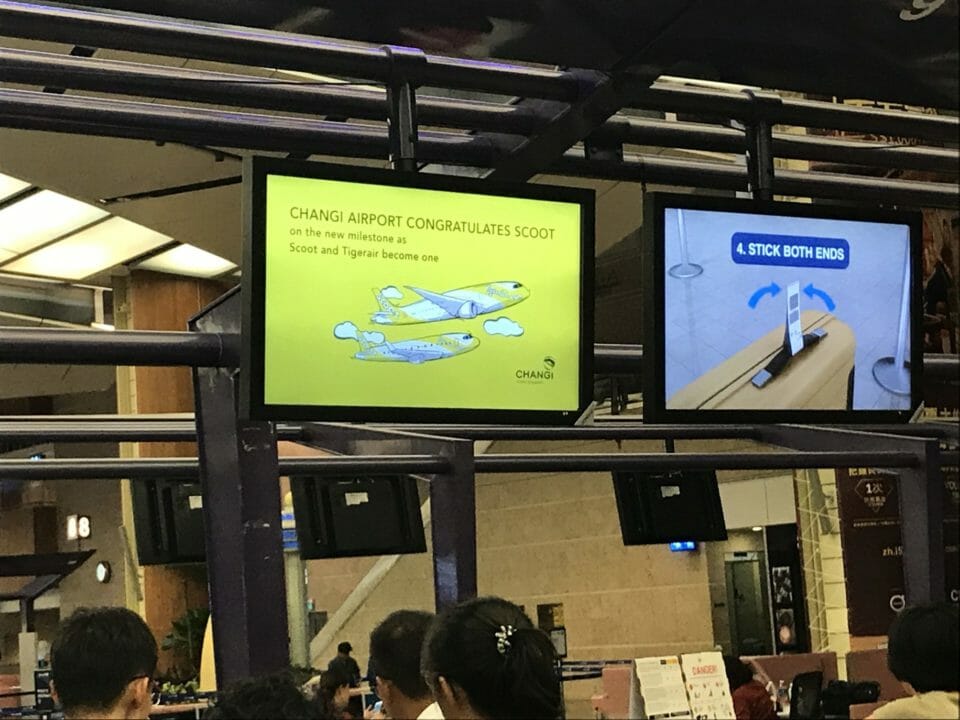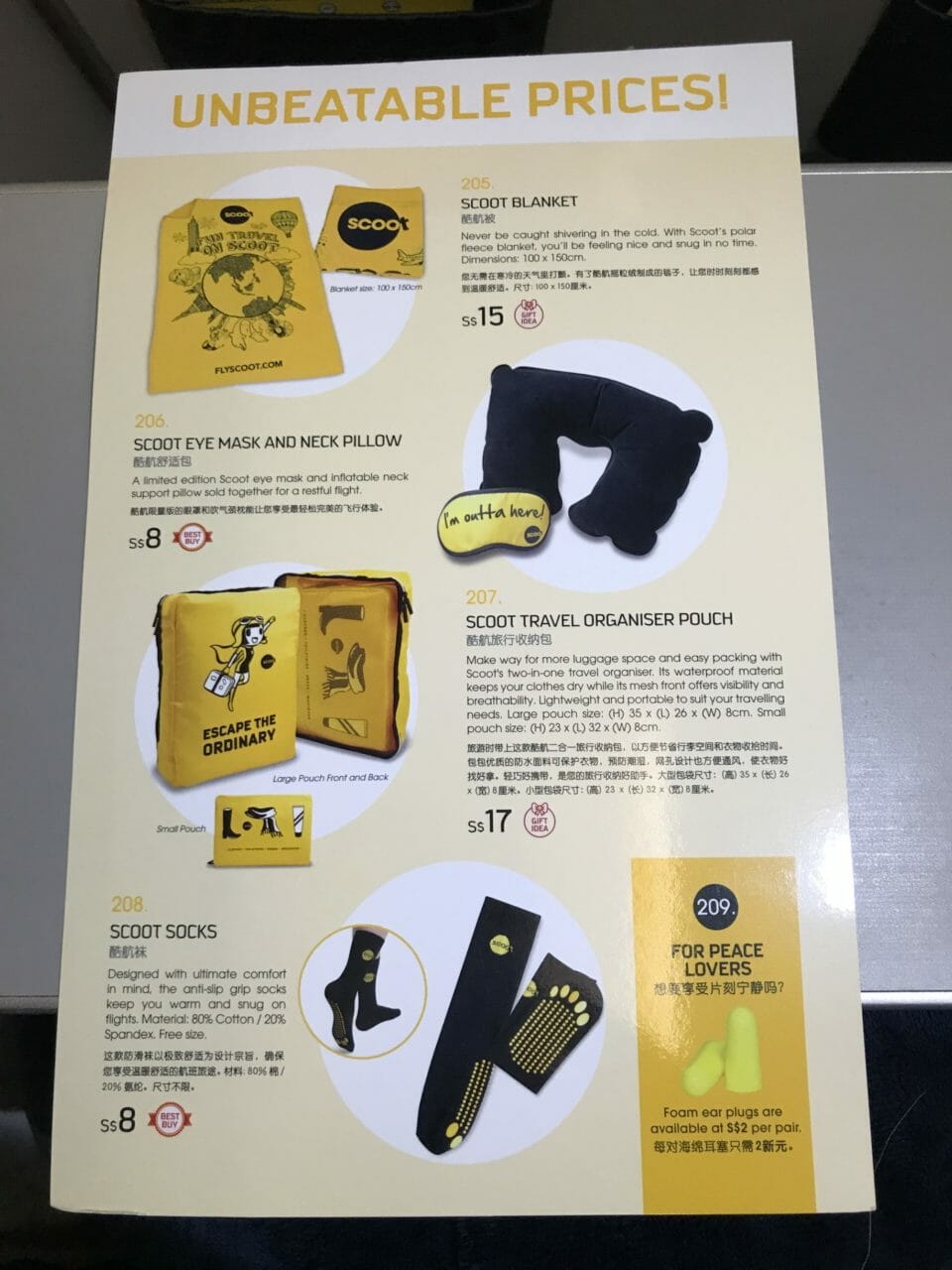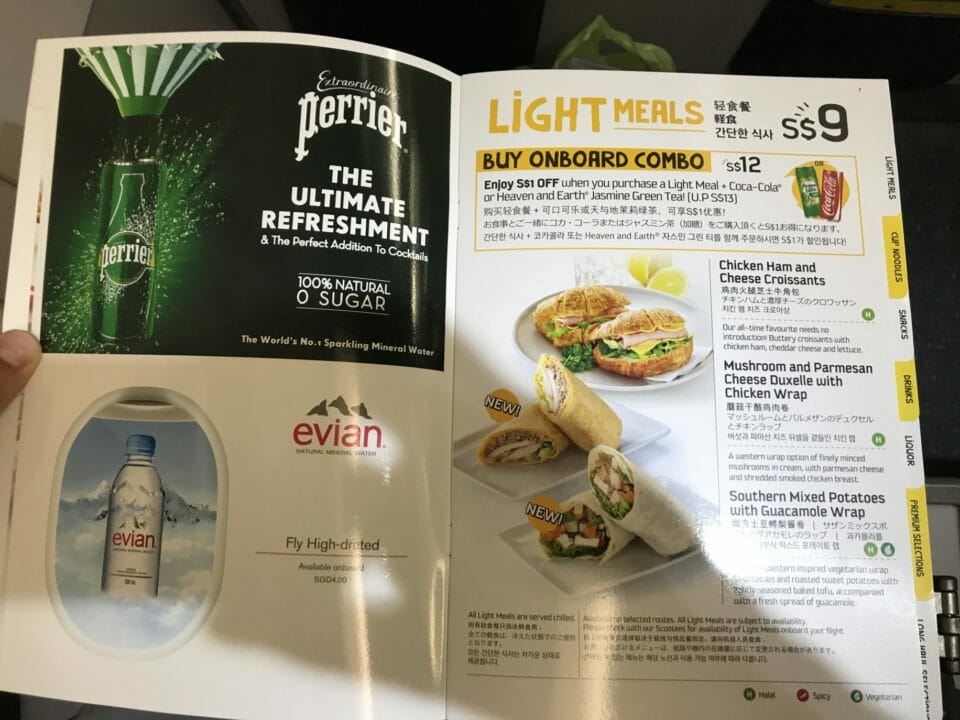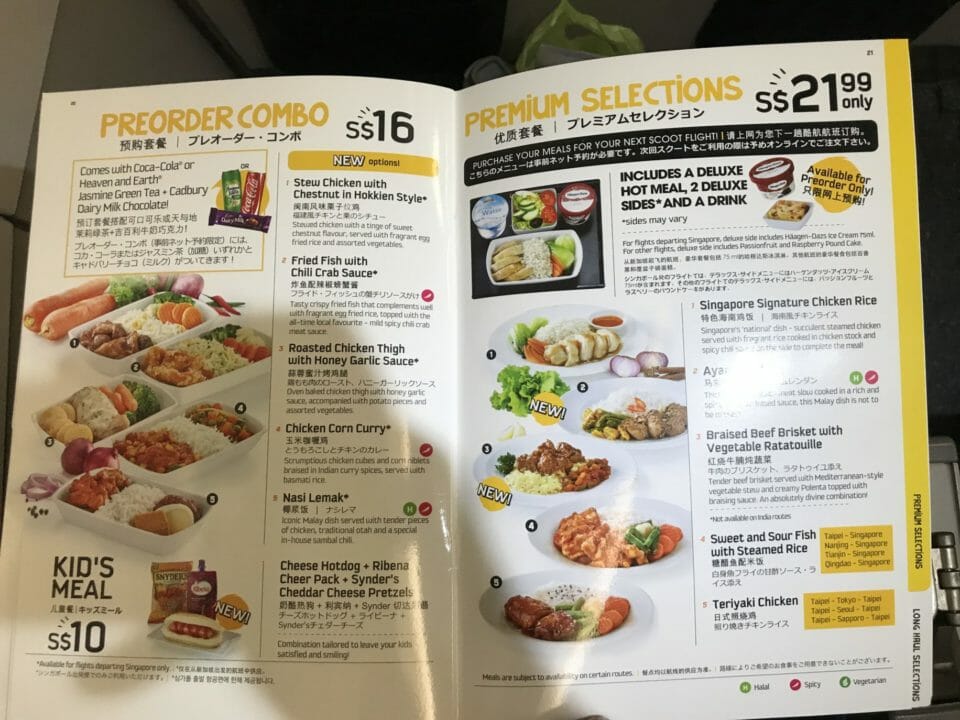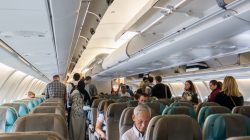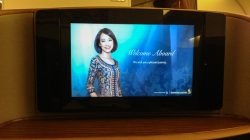I booked a one-way flight from SFO to Singapore on Singapore Airlines SQ1, with the intention of continuing onward to Bali for a 10-day yoga retreat. The Tigerair flight was the least expensive option to arrive in Denpasar Ngurah Rai airport (DPS) prior to 12:30 PM on July 30.
Tigerair (now Scoot) is an ultra-low cost carrier that originated in Singapore. It is part of the SIA group.
- PROS: Inexpensive fare (good value), fantastic in-flight merchandising, easy check-in, boarding and de-planing and spacious seats that recline
- CONS: No-wifi, bare-bones interior, semi-detached crew
Trip Report Series
- Self-Connecting to an International Flight: Lessons Learned
- Review: Singapore Airlines Economy Class, San Francisco – Singapore (via Hong Kong)
- Review: Plaza Premium Lounge, Hong Kong Chep Lap Kok Airport
- Review: Free Singapore Stopover Tour, Changi Airport
- Review: Tigerair (now Scoot), Singapore to Denpasar, Bali
- Review: Premier Lounge, Bali Ngurah Rai International Airport
- Review: EVA Air Economy Class, Denpasar, Bali to Taipei
- Review: China Airlines Lounge, Taipei Taoyuan International Airport
- Review: China Airlines Business Class, Taipei to Seoul Incheon Airport
- Review: Korean Air KAL Prestige Lounge, Seoul Incheon Airport
What Is Tigerair?
Tigerair (formerly known as Tiger Airways) was (and still is) a low-cost carrier based in Singapore. It was founded in 2003 with three shareholders: Singapore Airlines (49%), Indigo Partners (24%) – yes, that Indigo Partners, aka the private equity firm that has been involved with like, every LCC from Spirit to Wizz to Frontier to Volaris Irelandia Investments (16%) and Temasek Holdings (11%).
The business proposition of Tigerair (TR) was to take-over short-haul routes from Singapore Airline’s regional, full-service subsidiary carrier, Silk Air, when they were underperforming. In a way, it was kind of like how Jetstar and Air Canada Rouge work for Qantas and Air Canada mainline, respectively, except that even sometimes Singapore Airlines would run both products on the same routes. It can get very confusing.
Things became even more complex when Singapore Airlines launched Scoot in 2012, its long-haul, low-cost offshoot designed to compete against AirAsia X, Jetstar and Cebu Pacific in Southeast Asia and Australia. Scoot has taken over a few mainline SIA routes (like Athens, for example) but also has positioned the SIA Group to be able to attract budget travelers in the long-haul, low-cost space as more and more middle class travelers in Southeast Asia are traveling.
Well, Tigerair was a bit of a disaster from the start. It began during one of the worst economic cycles to hit the global airline industry, yet it continued to operate and grow. It created subsidiaries in Taiwan and Australia, and in 2007, Tiger Airways Holdings was established to manage all of these affiliates.
Tigerair continued to struggle through the early 2010s, losing money virtually everywhere it went. Eventually, Singapore Airlines realized that it would be better if Tigerair were more formally integrated into Scoot to create a, “network” like model between its short and long-haul sister brands. It thus increased its ownership stake in Tigerair to 90%, de-listed it from the Singapore Stock Exchange, and created Budget Aviation Holdings to manage both Scoot and Tigerair Singapore. Tigerair Australia is now wholly-owned by Virgin Australia and Tigerair Taiwan is co-owned by China Airlines (80%), Mandarin Airlines (10%) and itself (10%). Those two subsidiaries continue to operate under the Tigerair name and brand.
In late 2016, Singapore Airlines decided to merge Tigerair Singapore and Scoot under one brand and airline operating certificate, which made a lot more sense from a cost perspective. Furthermore, the two airlines are on the same reservations platform (Navitaire New Skies) and would be able to feed on each others’ routes. The merger completed on July 25, 2017.
Tigerair owns 23 aircraft – 21 of which are Airbus A320s and 2 are A319s. They also have 39 A320 NEOs on order, scheduled for delivery in 2019. Scoot, up until now, has been an entirely 787-oriented airline (though it started off using 777-200ERs leased from SIA).
Booking
I booked this flight on the Tigerair website after discovering that it would be the most inexpensive nonstop option from Singapore to Denpasar. I had to arrive in Bali prior to 12:30 that day, and the early departure time at 7:15 AM worked well for my schedule.
The Tigerair website is full of customizable options to enhance the journey. I know that I am a sucker for paying a few dollars here and there to make my journey better. I decided to splurge and prepay for my carry-on baggage (10 kg) and checked luggage (20 kg) as well as pre-select my seats for a nominal fee (1A). I also added insurance, which as literally $6 USD, and then added on a Tigerbites meal, where I ordered Nasi Lemak.
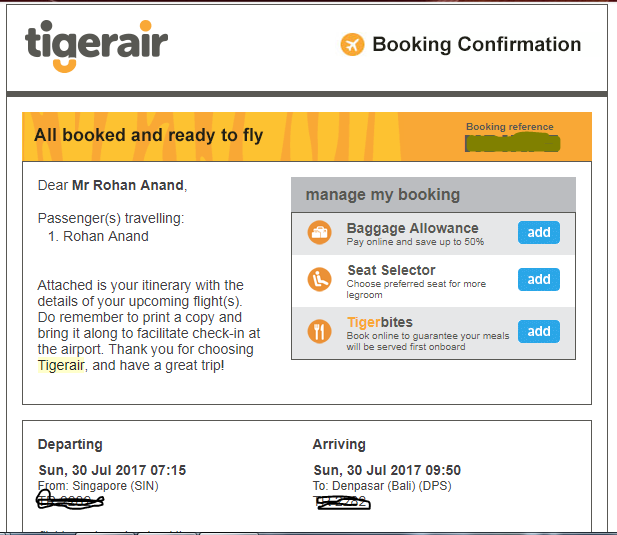
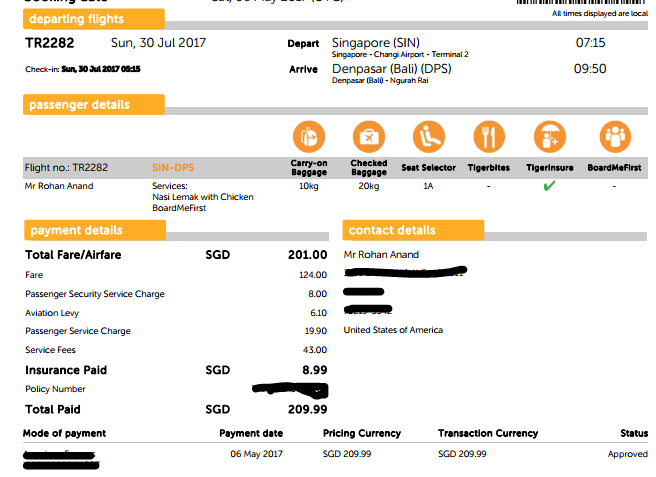
In total, I paid about $210 SGD, or roughly $155 for this flight, all-in. For a nearly 2.5 hour flight from SIN to DPS, I thought this was very reasonable.
Day of Departure
Tigerair operates out of Terminal 2 at Changi airport, which was a very quick walk from the Crowne Plaza Changi (where I stayed the night before). I was concerned about lines at the wee hours of the morning, so I printed my boarding pass and bag tag the night before at the self-check-in locations.
Changi Terminal 2 is predominantly used by low-cost carriers and regional airlines throughout Asia. Fortunately, at that early hour, the lines were really minimal. We cleared immigration and security in under 20 minutes before proceeding to the holding area for the gate.
I chuckled when the gate announcements called attention to the, “Scooties” that would be taking care of us that morning on our flight to DPS. Singapore Airlines created Scoot as a means of adopting a fun, lively culture for budget-minded travelers, a slight departure from its very premium-oriented mainline brand.
Boarding
I was really glad that I opted to early board because bin space on this flight was prime real estate. That being said, boarding was very orderly. The interior of the cabin is standard budget carrier: plain, mundane leather seats, but hey, at least they reclined! The lavatories were super clean and there was plenty of bin space.

It is pretty incredible how many things one can purchase on a Tigerair (I guess I should start saying Scoot) flight. For instance, they have the pillow, blankets and socks packages, toys and collectibles, and let’s not forget all of the food! I liked how the font on the food menu appeared like the same kind used on Spirit Airlines. I was looking for the, “Grab Some Liquid Fun” prompt somewhere.
The cabin crew was mildly friendly, and prior to pushback, an attendant confirmed my Nasi Lemak order. We left the gate on time and within 15 minutes were lifting off from Singapore.
Meal Service
My meal came out straight away. I was told that the coke that I received it with was not something that could be changed, but don’t remember ordering a coke. Oh well. I hate Coke. Esp at 7am. But I digress.
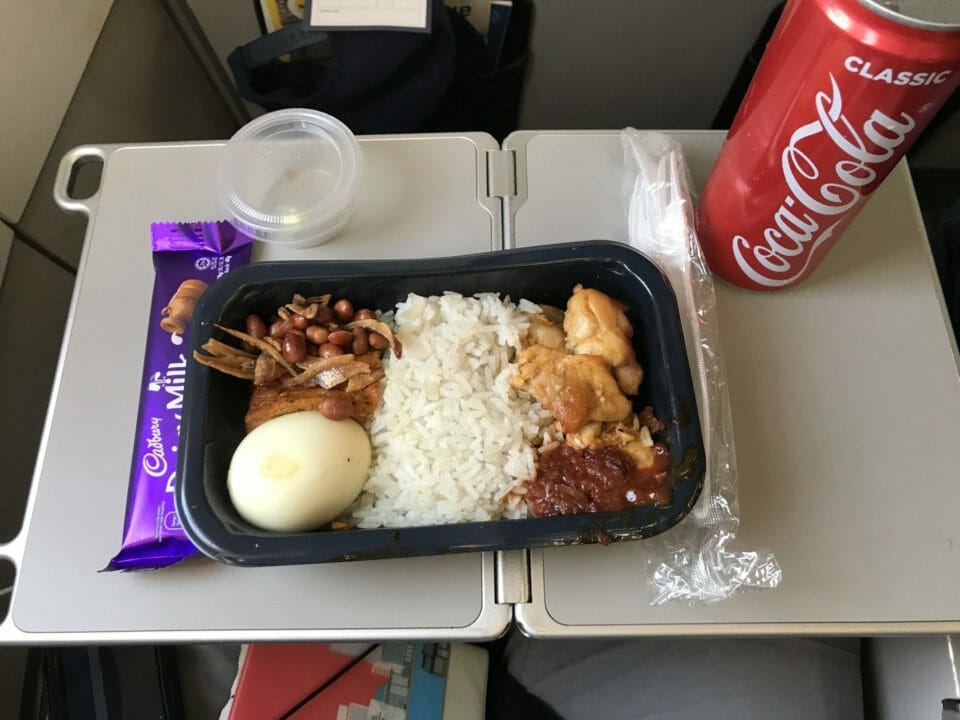
That said, I LOVED my Nasi Lemak. This is a popular Malaysian dish where the rice is cooked in coconut milk and pandan leaf, then mixed with chili paste, peanuts, and fried anchovies. The chicken was succulent and tender and came with a delicious, spicy peanut sauce. I mixed in the peanuts, fried anchovies, and hard-boiled egg and it was such an amazing breakfast. It came with the Coca Cola and Cadbury chocolate.
I later ordered a braised chicken with rice. You can pay for meals on Tigerair with cash, so I exhausted my Singapore dollars this way. This second meal was not as good as the Lemak, unfortunately. I also purchased some chips and queso as a snack for later.
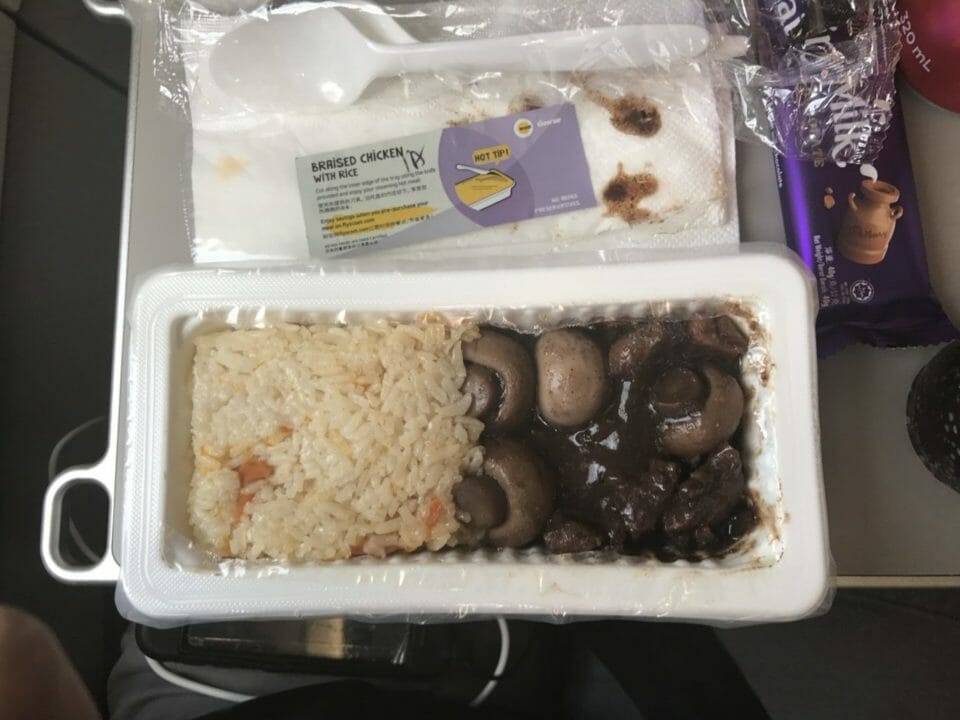
So it’s worth checking out this menu. You can literally get everything. It is very similar to the extensive menu available on AirAsia X.
Scenery
Everything cruised along peacefully and uneventfully. After my feast, I placed my headphones in and dozed off for a bit. The legroom in the bulk head is quite comfy and allows one to spread out. I could place my backpack in the overhead bin and then just enjoy the rest of the ride.
We had some lovely morning views from take-off to landing as we cruised towards Bali.
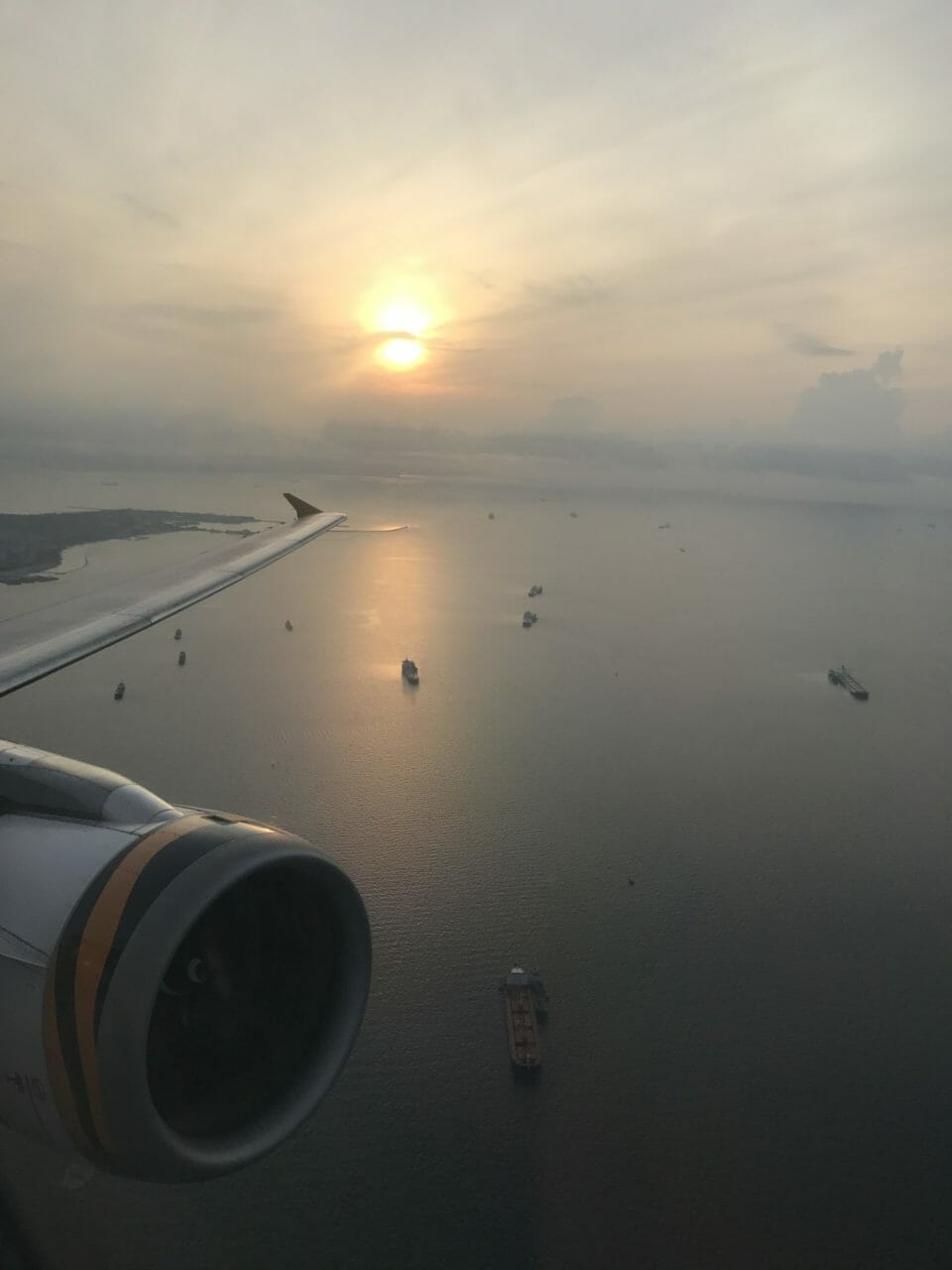

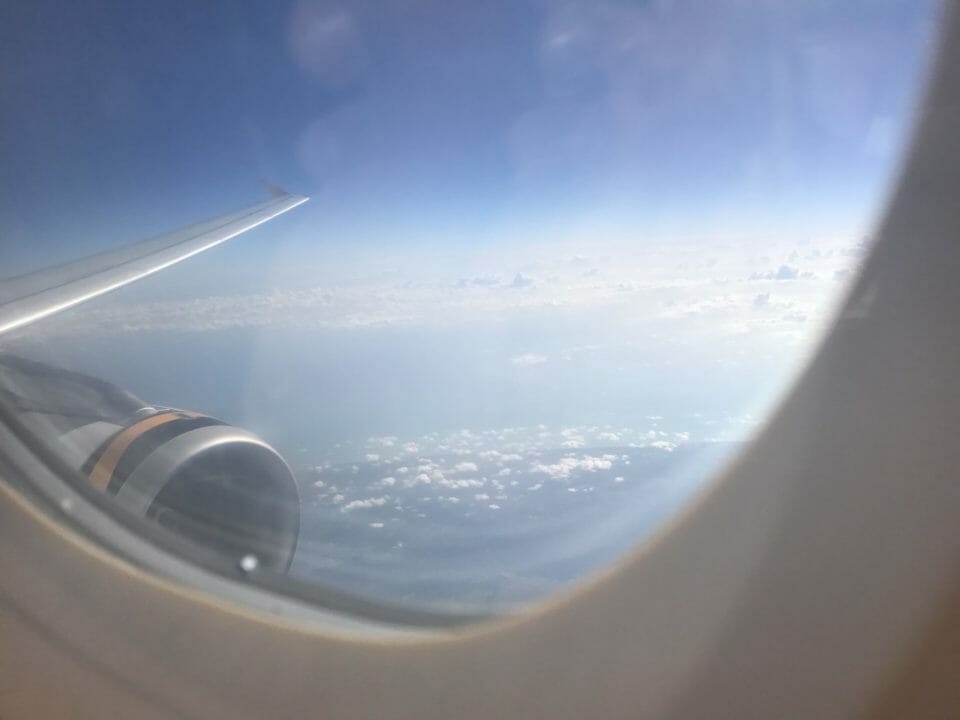
Landing at Bali was very smooth and being the first off, immigration was swift and quick. We did have a long walk to immigration, however.

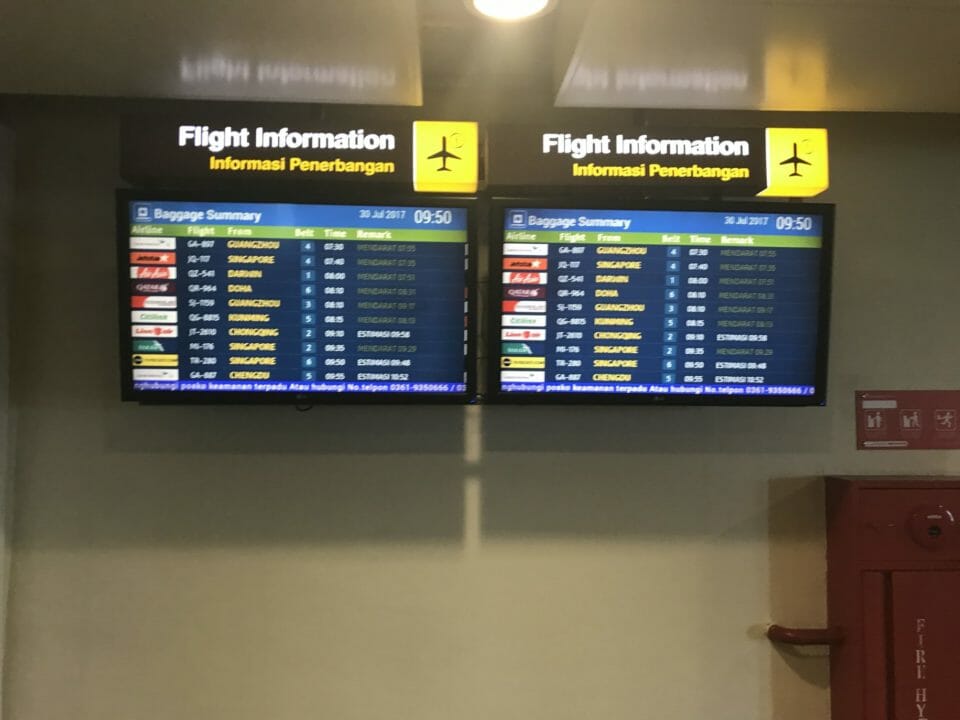


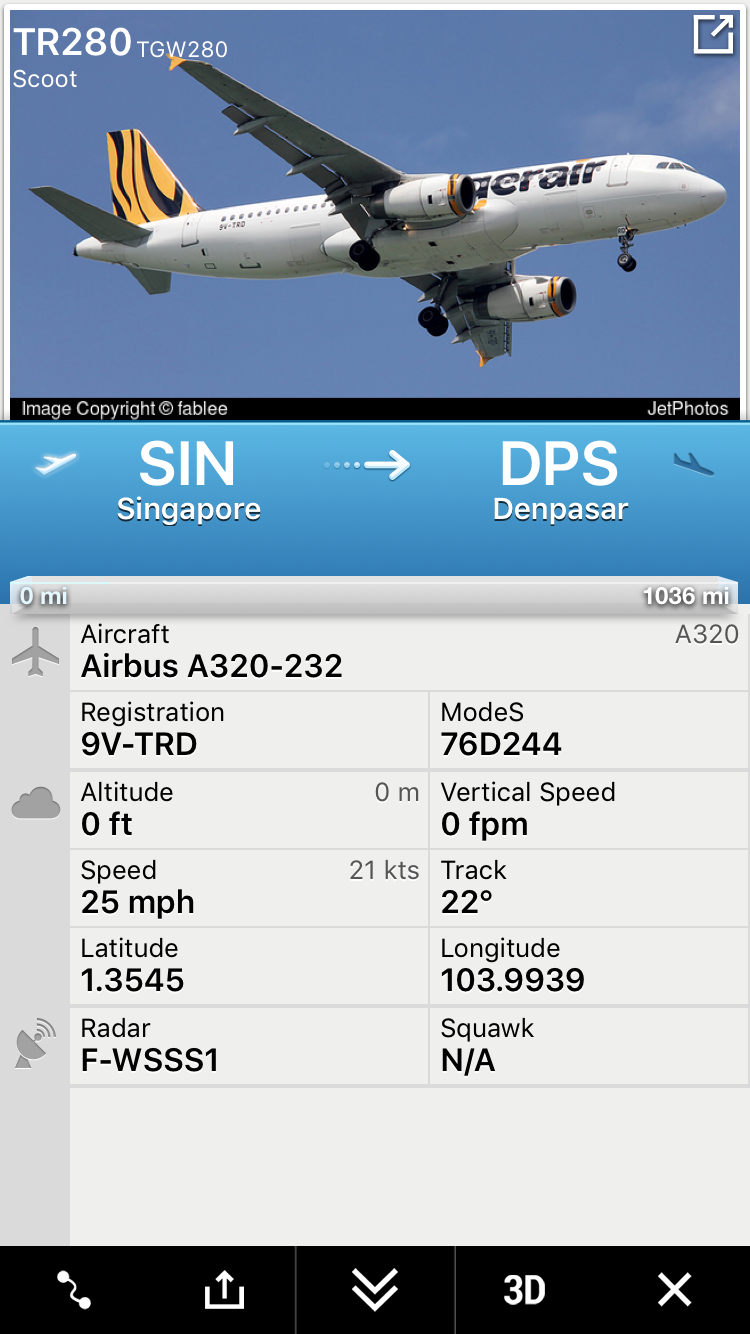
Summary
I think that this carrier offers fantastic value for money. I’m really starting to dig the low-cost carrier concept in many parts of the world, now having tried airBaltic in Eastern Europe, AirAsia X and Scoot in Southeast Asia. I do want to try out Norwegian (long-haul), Icelandair, WOW Air, Jetstar, Air Canada Rouge and a few others when my life will allow me to do so.
That being said, I am a fan of the SIA strategy using Scoot and would gladly fly them again. They ran on-time, were safe, clean, provided friendly and efficient service, were transparent about fees and overall made me feel like a valued customer.





